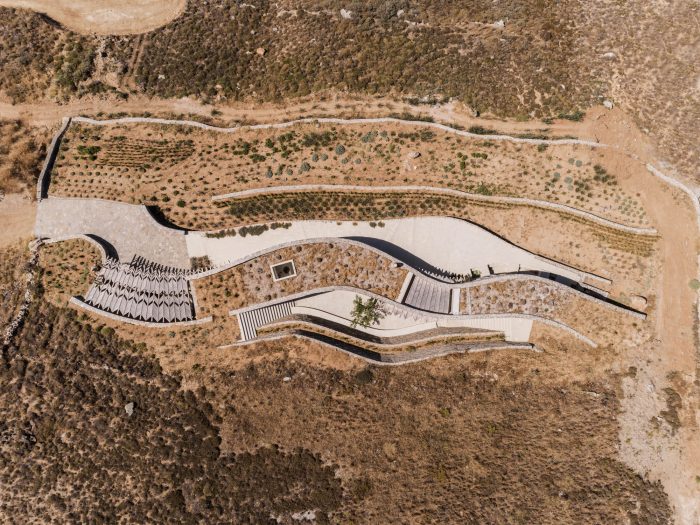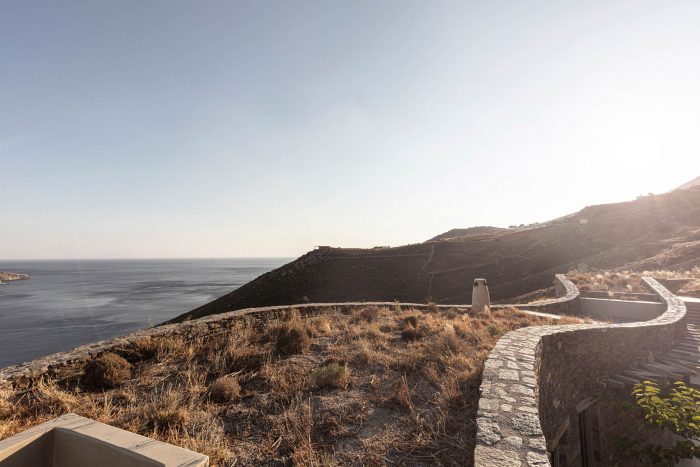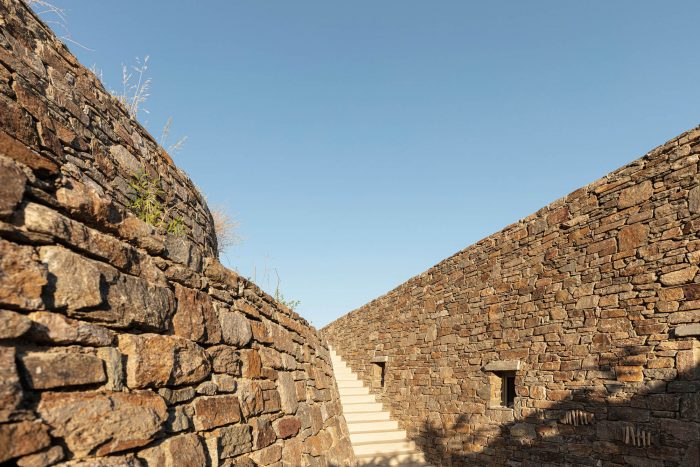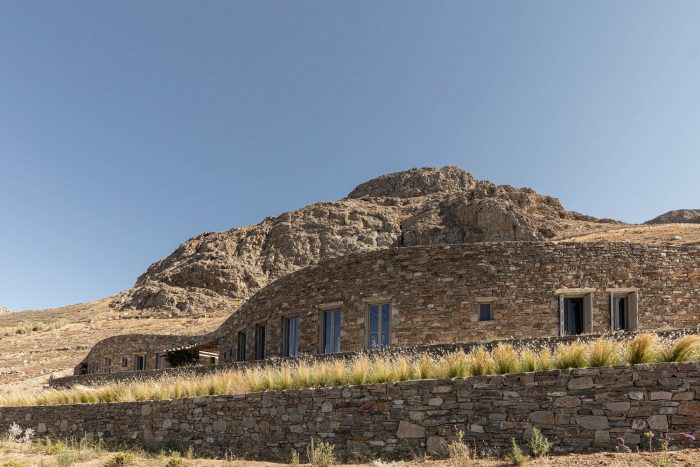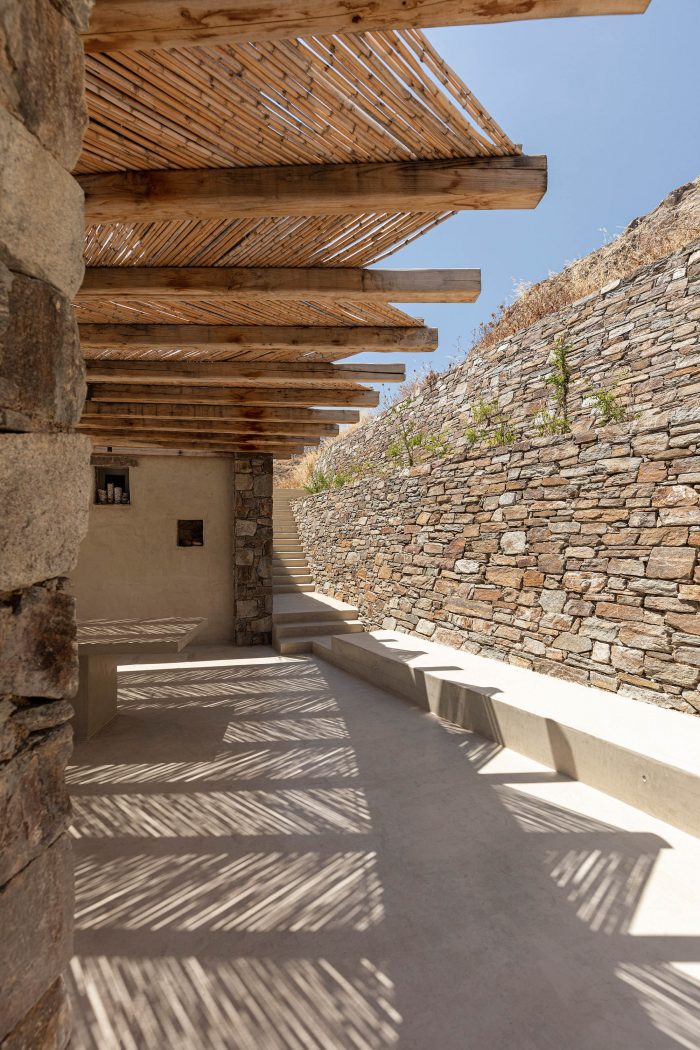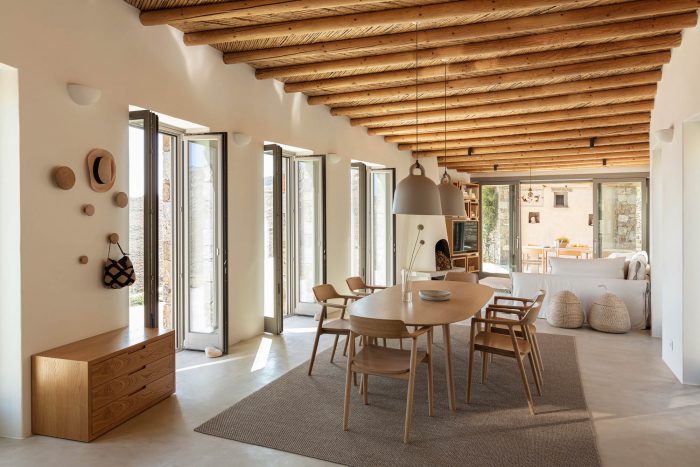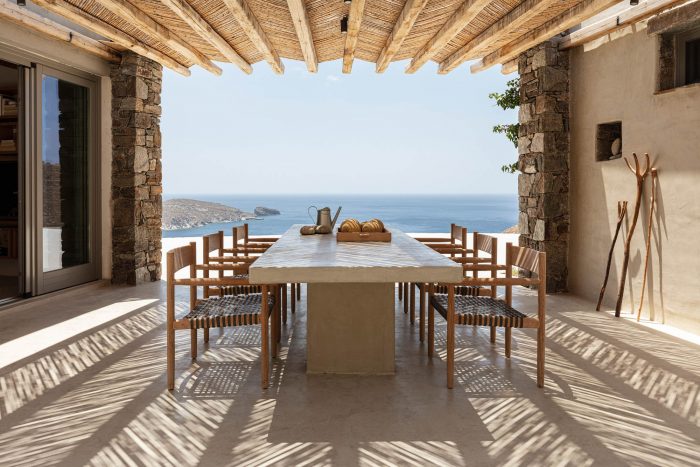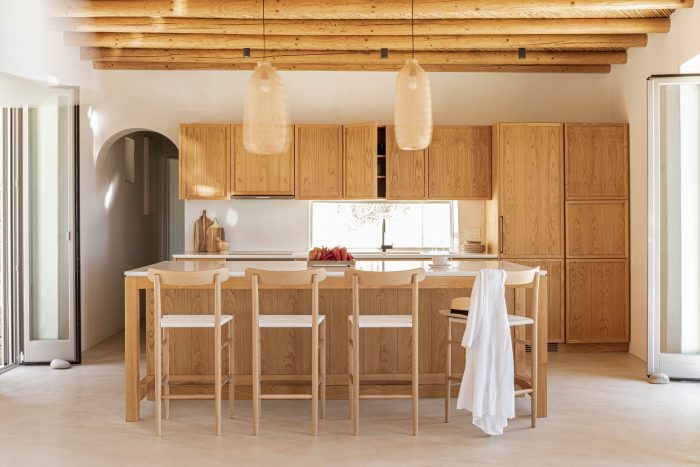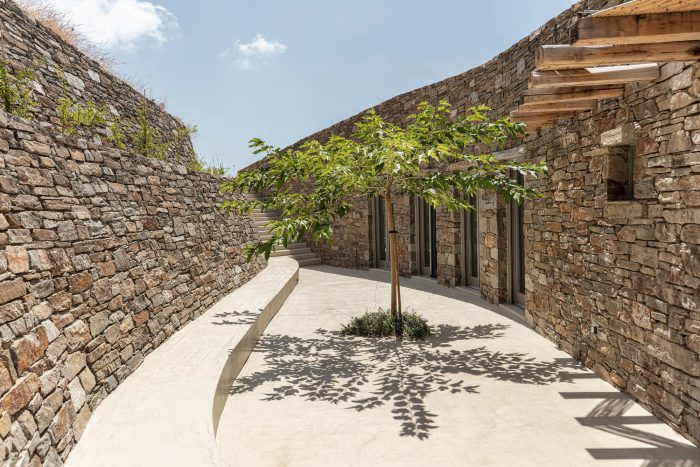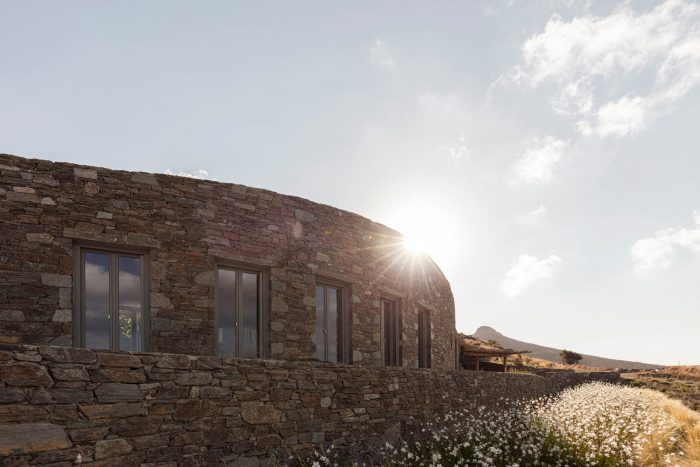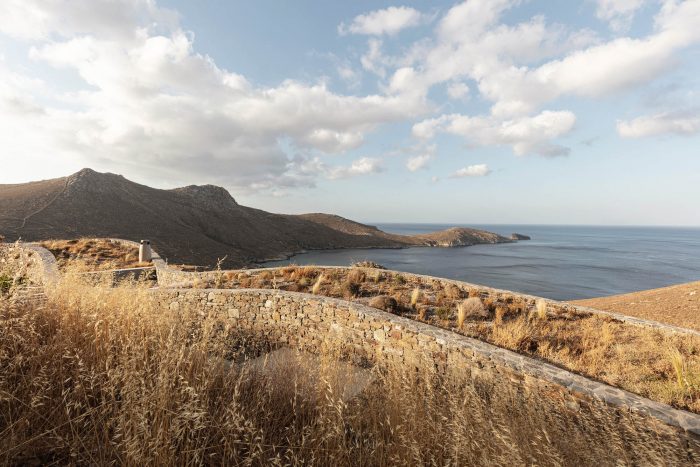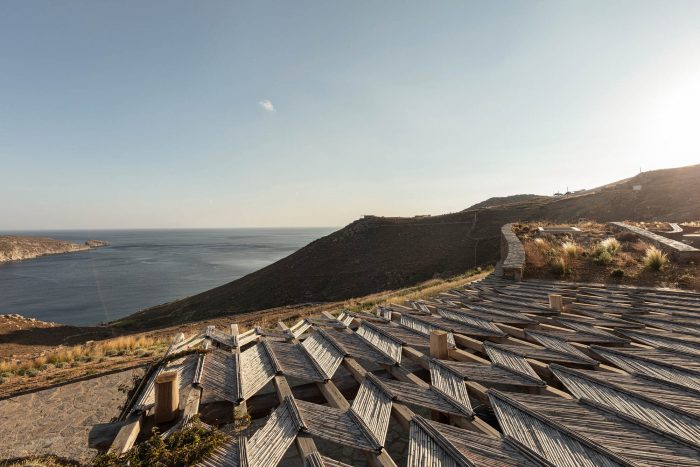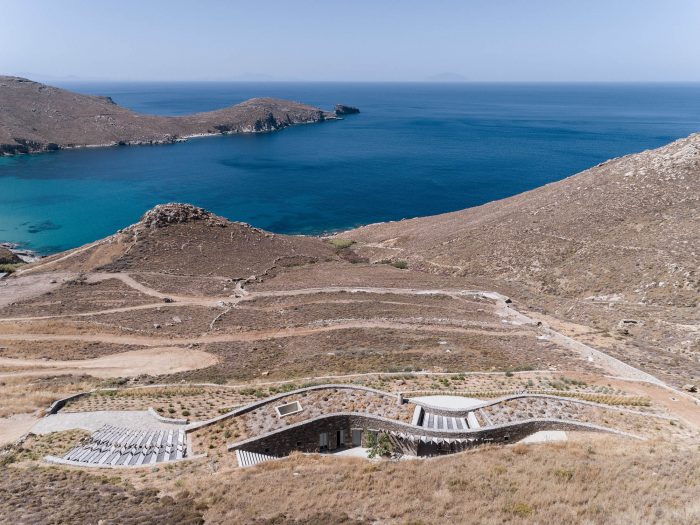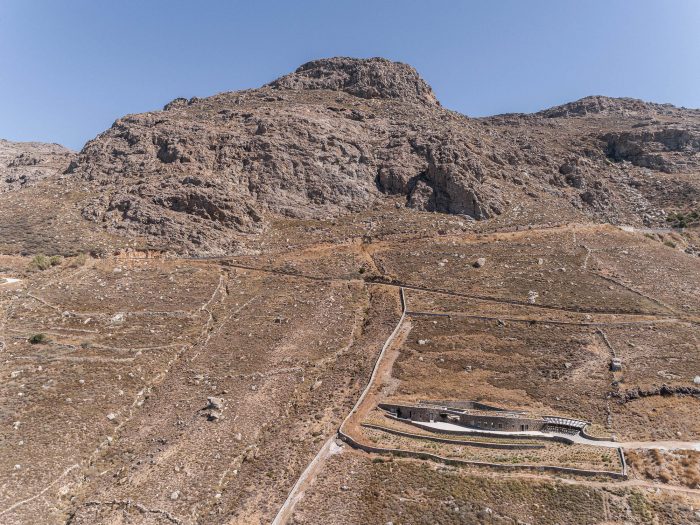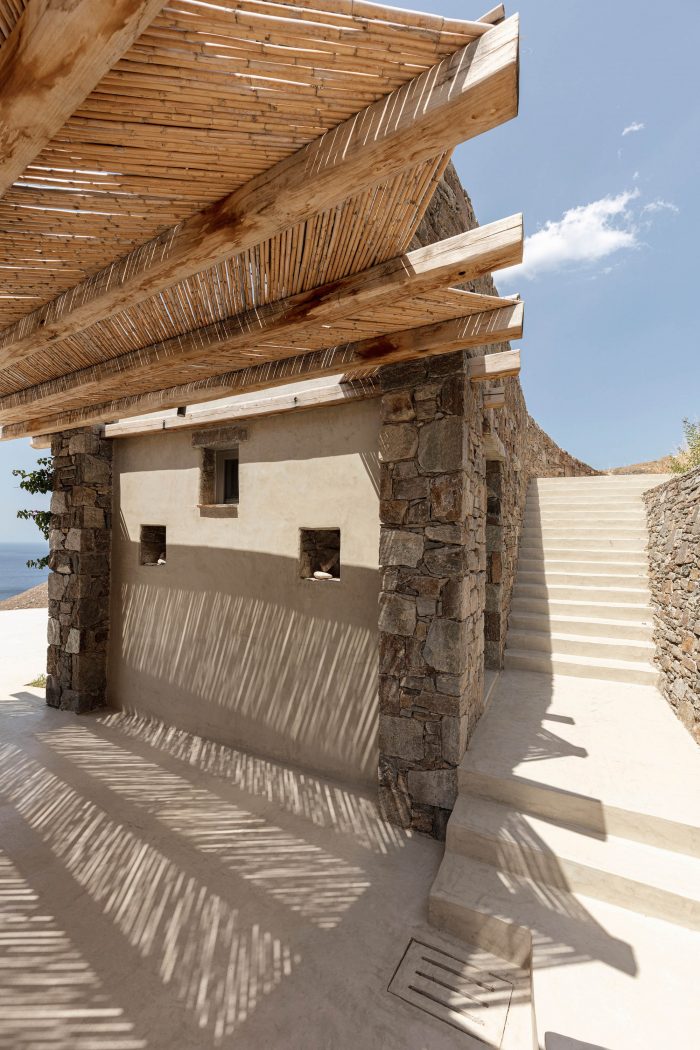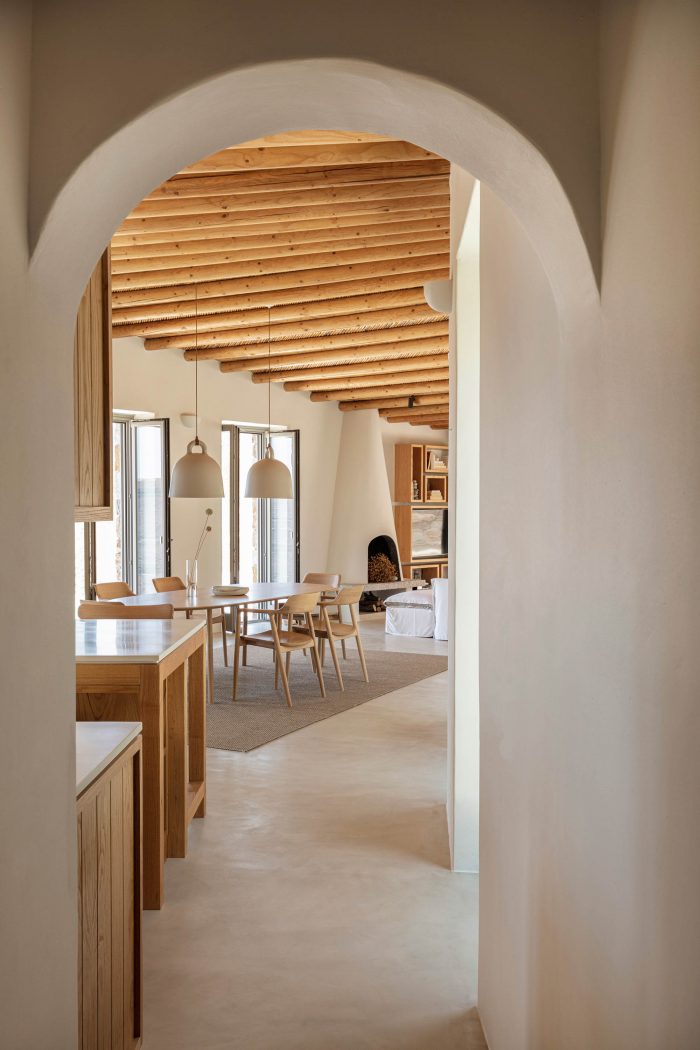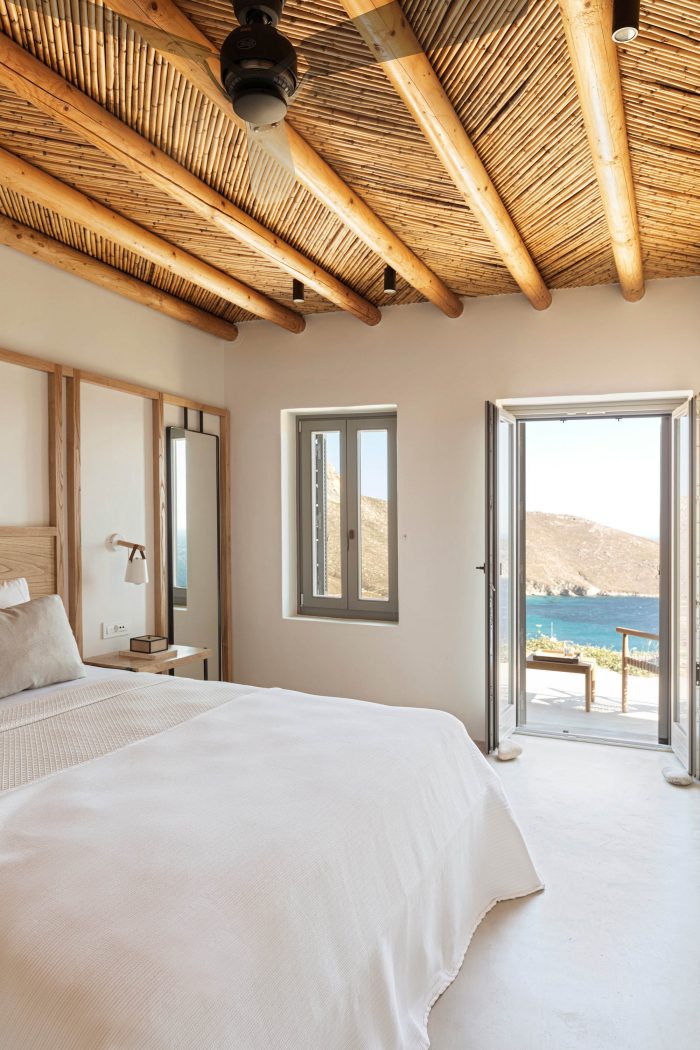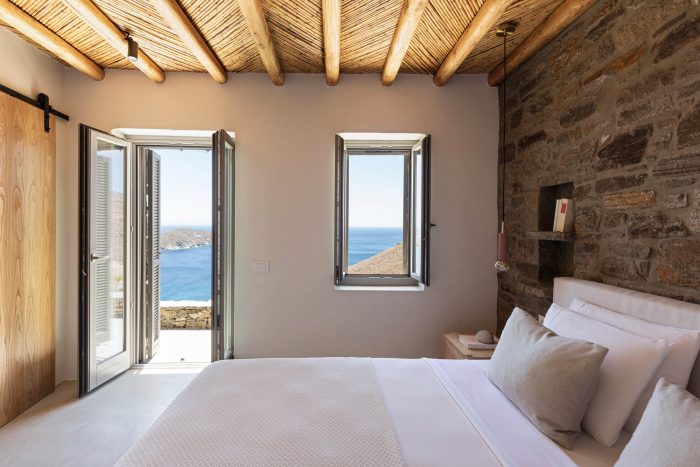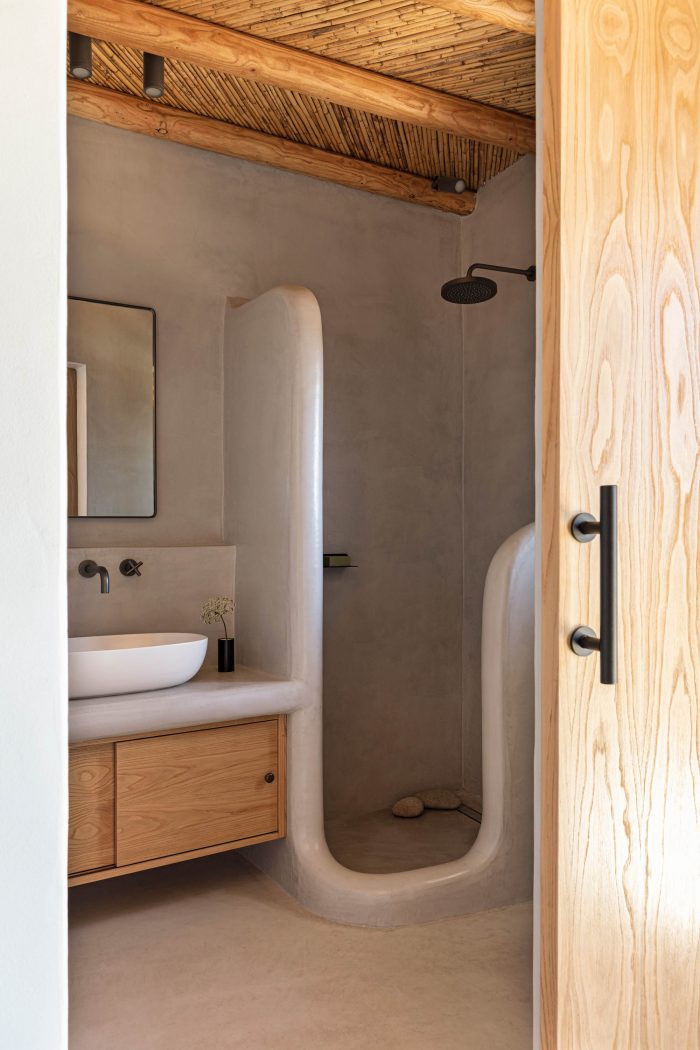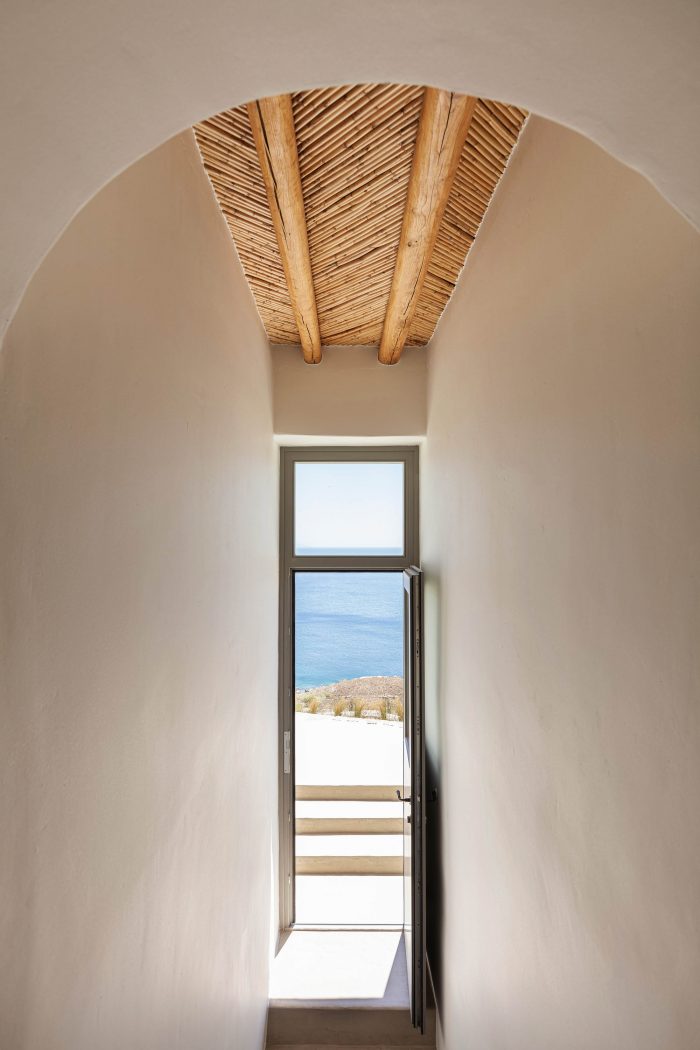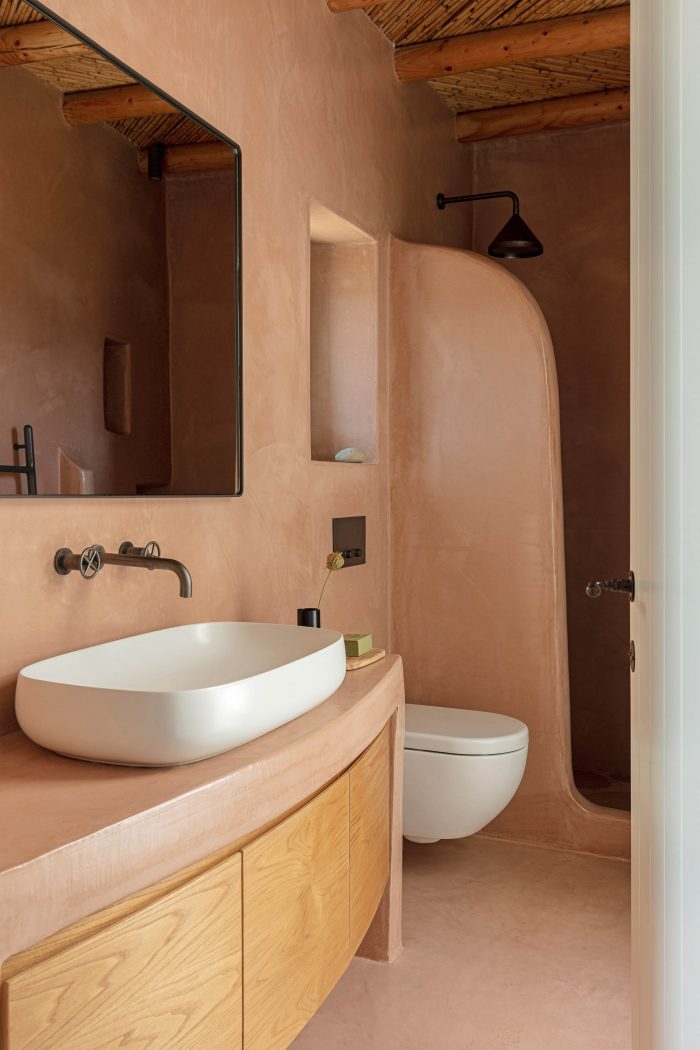设计的主要重点是创造一个融入自然环境的房子。这个环境由陡峭的泥土和砾石斜坡组成,散布着野生的荆棘灌木,以及美丽的大岩层。虽然最重要的现有元素,是短石挡土墙,当地人称为xerolithies,创建于很久以前的土地耕种目的。
The main focus of the design was to create a house that blends in its natural environment. An environment comprised of steep dirt and gravel slopes, dressed with scattered wild thorny bushes, and beautiful large rock formations. Though the most important existing elements, were the short stone retaining walls, locally called xerolithies, created a long time ago for land cultivation purposes.
当人们想到希腊群岛和他们的乡土建筑时,脑海中就会浮现出零散堆叠的白色盒子。第一步是挑战这种形态学上的先入为主的观念,把房子的主要立面(前、后)想象成 “xerolithies”。它们从低处开始,逐渐发展出足够的房屋高度。它们缓缓地靠近和离开斜坡,并相互独立地移动,在它们之间形成空间。
When one thinks of the Greek Islands and their vernacular architecture, scattered and stacked white boxes come to mind. The first step was to challenge this morphological preconception by imagining the main facades (front and back) of the house being formed as “xerolithies”. They start low and gradually develop a sufficient height for a house. They move gently closer and away of the slope and independently from one another, forming spaces in between them.
为了达到这个目的,房子的所有功能都被依次放置,使它变得又长又窄。墙体有一种轻盈的感觉,似乎受到基克拉迪亚强风的影响,就像 “空气中的丝带”。为了完成 “xerolithia “的相似性,房子的屋顶被泥土和植被覆盖,模仿自然景观。 这使得房子几乎不可见,尤其是从后面和远处看时。
To achieve this, all the functions of the house were placed sequentially making it long and narrow. The walls have a lightness that seems like they were affected by the strong Cycladic winds, like “ribbons in the air”. To complete the “xerolithia” likeness, the roof of the house was covered with dirt and vegetation imitating the natural landscape. This made the house almost invisible, especially when seen from behind and afar.
基克拉迪亚农村房屋的另一个重要特征是木制凉棚,它由厚实、生硬、光滑的木梁和柱子组成,上面覆盖着竹子,全部都是自然的颜色。这种结构也出现在房屋内部的天花板上,遵循传统的屋顶建造方式。这种特殊的元素沿着结构的整个长度,里外都被使用。
Another important feature of the Cycladic rural house is the wooden pergola, which consisted of thick, raw, smooth, wooden beams and columns with a bamboo cover, all in their natural color. This structure appears also in the interior of the house, on the ceiling, following the traditional way of constructing roofs. This particular element was used along the entire length of the structure, inside and outside.
支撑这种结构的梁自然不能平行放置,而是顺着房子的曲线形态,就像长长的脊柱上的脊椎骨。因此,竹子以鱼骨的方式编织出了独特的图案,具有美丽的树荫纹理。
The beams supporting this structure naturally could not be placed parallel to each other, instead, they follow the house’s curvy morphology, like vertebrae on a long spinal cord. As a result, the bamboo was knitted in a fishbone manner creating a unique pattern with beautiful shade textures.
门窗采用木质简约的浅橄榄色,主外墙为石材,无接缝砂浆。这两个决定都遵循了传统的风格和技术。
The doors and windows are wooden and simple with a light olive color and the main exterior walls are stone with no joint mortar. Both these decisions follow the traditional style and technique.
建筑师:Sinas Architects
面积:245平方米
年份:2019年
摄影:Yiorgos Kordakis
制造商:Dedon, Fantini, Maruni Wood Industry, Normann Copenhagen, Patiris, Valdama, Maruni, Myran
建筑设计:George Sinas, Maria Mamoura
室内设计:Olga Ktena,George Sinas
城市:米洛斯
国家:希腊
Architects: Sinas Architects
Area: 245 m²
Year: 2019
Photographs: Yiorgos Kordakis
Manufacturers: Dedon, Fantini, Maruni Wood Industry, Normann Copenhagen, Patiris, Valdama, Maruni, Myran
Architectural Design:George Sinas, Maria Mamoura
Interior Design:Olga Ktena, George Sinas
City:Milos
Country:Greece



